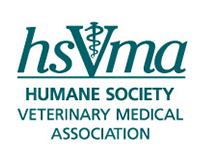Zoobiquity: The Intersection of Human and Veterinary Medicineby Barbara Natterson-Horowitz, MD December 10, 2012  Collaboration between DVMs and MDs benefits the health of humans and animals. When lecturing recently to a group of medical students I posed a question: Are any diseases uniquely human? A smattering of hands went up. Breast cancer? Anxiety disorder? Hypertrophic cardiomyopathy? Of course, my response to these students was "no, all of the above are shared by human and animal patients." It would be nice if I could attribute these students’ lack of knowledge to their youth or inexperience. Unfortunately, when lecturing to groups of seasoned senior physicians I often encounter the same utter lack of knowledge about the naturally-occurring diseases of animals, and a lack of understanding of the veterinary doctors who care for them. This gulf in knowledge is very unfortunate because there is much physicians can learn from veterinarians and the animals they treat. Indeed, I have spent the past five years working on breaking down these barriers between our professions. The Zoobiquity project ("Zoobiquity" is a neologism coined by Kathryn Bowers and myself to describe the intersection of clinical human medicine, veterinary medicine and evolutionary biology) includes a research initiative, conferences and a recently published book. Underlying these activities is a belief that through collaboration we can develop a species-spanning approach to medicine that can improve the health of all of the patients on the planet. The Zoobiquity Conferences bring together DVMs and MDs treating the same disorders in different species. Jointly sponsored by the UC Davis School of Veterinary Medicine, Western University of Health Sciences College of Veterinary Medicine, David Geffen School of Medicine at UCLA, and the Los Angeles Zoo, these conferences have featured cases from across the field of medicine. Cases of breast cancer in an English springer spaniel and a middle-aged nurse, hypertrophic cardiomyopathy in a cat and a high school sprinter, separation anxiety in a Sheltie and a preschool boy; veterinary and human subspecialists presented and discussed these cases as peers across the species divide. The Zoobiquity Research Initiative is pairing veterinary students from UC Davis and medical students from UCLA on projects dealing with shared medical concerns of animals and humans. This past summer, our book, Zoobiquity, was published in the U.S. The book considers health concerns of importance to humans, from the veterinary perspective. It asks, in essence, how a physician's care for his /her patient might be improved by working with and learning from veterinarians. Since Zoobiquity's publication I have learned that there is tremendous interest in veterinary medicine and animal health among human health professionals. Kathryn and I have heard from many physicians, nurses, dentists, podiatrists, nutritionists, medical students, psychotherapists and others asking, "How can we become involved?" I believe this interest signals that we are at an important and perhaps historic moment in the history of our fields. Interest in animals, companion and wild, is increasing all over the world. And health care professionals are developing a deeper awareness of the important role the environment is playing in the health of us all. The growing awareness and understanding of the connections between the cleanliness of our air and water, the safety of our food, and the health of the earth's animals creates momentum for the creation of an interdisciplinary and interprofessional approach to medical concerns.  "Zoobiquity" explores how cooperation between physicians and veterinarians can be used to diagnose, treat, and heal patients of all species. Tim Kupsick for the HSUS Another force which is helping to bring our fields closer together is a trend within human medicine towards collaboration. The days of the solo MD practitioners are all but over. Young physicians are entering a field where teams of health care providers work together to address challenging clinical concerns. Within teaching hospitals, interdisciplinary teams are now commonplace. The breaking down of these interprofessional barriers within human medicine creates a climate friendly to other collaborations with other disciplines. Another encouraging sign is that interest in evolutionary biology is increasing among physicians. The emerging field of evolutionary medicine seeks to bring the knowledge of evolutionary biologists and ecologists to the human bedside. At UCLA, for example, the chair of evolutionary biology, Dr. Dan Blumstein, and I have started the UCLA Evolutionary Medicine program and I am currently developing a minor degree program for UCLA undergraduates. This field can be tremendously helpful in bringing our professions together. Implicit in an evolutionary approach to health concerns is the awareness of the status of human beings as animals. Furthermore, an evolutionary approach to medicine recognizes that we humans do not sit on one side of a schism, but on a spectrum with the other animals with whom we share common ancestors. This perspective encourages physicians to think beyond their single-species perspective and encourages the development of novel hypotheses which take into account the ecosystems in which we all live. My work with veterinarians and other animal experts has transformed how I think about my patients, how I practice medicine and how I view the world. The book offers many specific examples of how a species-spanning approach can help clinicians better understand their patients. I hope to continue learning more about the field of animal health and veterinary medicine as I continue my work as a cardiologist at UCLA. One key way in which I hope to spread this message to other physicians, psychotherapists, medical students, pre-meds and others is through collaborative research programs and conferences. I am delighted to report that Zoobiquity 3 is being planned now. Unlike the first two conferences which were held in Los Angeles, the third Zoobiquity Conference will be held in New York City. The Animal Medical Center in Manhattan will be partnering with medical schools and other veterinary venues in the city to offer an experience which will bring together and facilitate conversations between DVMs and MDs taking care of the same issues in different species. We must move our fields closer together for the sake of human beings, animals, and the earth we all share. The last sentences of Zoobiquity speak to the potential and urgency of such collaboration: This calls for physicians to expand their thinking beyond human bedsides to barnyards, jungles, oceans and skies. Because the fate of our world’s health doesn't depend solely on how we humans fare. Rather, it will be determined by how all the patients on the planet live, grow, get sick, and heal.  Barbara Natterson-Horowitz, MD is a Professor of Medicine in the UCLA Division of Cardiology and an attending faculty cardiologist at the UCLA Medical Center where she has practiced since 1994. She serves as Director of Imaging for the UCLA Cardiac Arrhythmia Center. She is actively involved in medical education at UCLA serving as course director at the medical school, post-graduate and undergraduate levels. Dr. Natterson-Horowitz lectures frequently on One Health, emphasizing its potential for the advancement of investigation and clinical care through interdisciplinary and inter-professional projects. In June of this year she and co-author Kathryn Bowers published, Zoobiquity: What Animals Can Teach Us About Health and the Science of Healing (Knopf, 2012). In addition, she founded and chairs the Zoobiquity Conference: A Species-Spanning Approach to Medicine. These conferences are designed to stimulate conversations and collaborations among doctors treating the same diseases in their patients of different species. Dr. Natterson-Horowitz also directs the Zoobiquity Research Initiative (ZRI), a multidisciplinary and multi-institutional research/education collaboration between faculty and students from the David Geffen School of Medicine at UCLA and UC Davis School of Veterinary Medicine. |
